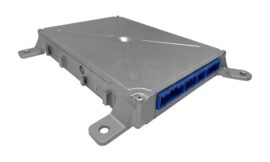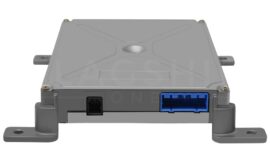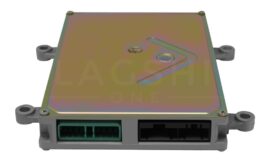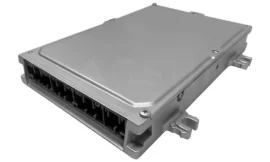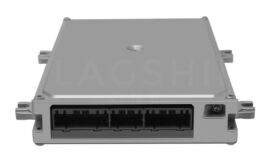Last updated on November 1st, 2024 at 12:07 pm
The Engine Control Unit (ECU), also known as the Engine Control Module (ECM) or Powertrain Control Module (PCM), is the brain of any modern vehicle, making it crucial in the functionality of your Acura TL. It controls a series of actuators within the engine to ensure optimal engine performance, including fuel injection rate, ignition timing, and variable valve timing. The ECU can also detect and diagnose problems in your vehicle, triggering the check engine light when necessary.
Overview of the Replacement Process
Replacing the ECU in an Acura TL is not a task to be undertaken lightly— it involves careful removal of the old module, followed by the installation of a new, often pre-programmed, module. The process should ideally be performed by a professional for safety and to avoid damaging other components. However, with the right tools and instructions, it can be done efficiently. Remember, when in doubt, trust the experts at Flagship One, Inc., your reliable source for automotive control units.

Tools Needed
Replacing the ECU in an Acura TL requires a certain set of tools. Before you begin the replacement process, ensure you have the following items on hand:
- Wrench set: You’ll need this to disconnect the battery and remove the ECM/PCM.
- Socket set: This is used to remove the bolts securing the ECM/PCM.
- Screwdriver: A flat-head screwdriver will be handy in loosening the clamps that hold the wiring harness.
- OBD2 Scanner: After installation of the new ECM/PCM, this tool will be used to clear any diagnostic trouble codes.
- Anti-static wrist strap: This is to prevent static electricity from damaging the new ECM/PCM.
- New ECM/PCM: Of course, you’ll need a new or refurbished engine control module.
Preparing Your Acura TL for ECU Replacement
Before jumping into the replacement process, it’s crucial to properly prepare your Acura TL. Following these steps will ensure a safer and smoother execution:
- Park the vehicle: Find a well-lit, flat surface to park your car. Make sure you have enough space to comfortably carry out the task.
- Safety first: Before starting any work, ensure you’re wearing the anti-static wrist strap to prevent static electricity from damaging the new ECM/PCM.
- Disconnect the battery: Using your wrench set, disconnect the negative terminal of your battery. This will prevent any electrical accidents while working on the ECM/PCM.
- Access the ECM/PCM: Locate the ECM/PCM in your vehicle. Usually, in an Acura TL, it’s placed near the car’s firewall.
- Remove any obstructing parts: Depending on your vehicle’s model, you might need to remove certain components to gain access to the ECM/PCM.
Step-by-Step ECU Replacement Guide
Follow the steps below to remove the old ECU and install the new one:
- Remove the old ECM/PCM: Begin by disconnecting the wire harness connected to the ECM/PCM. Loosen the clamps that hold the wiring harness, using your flat-head screwdriver. Once loosened, gently pull out the wire connectors from the ECM/PCM. Next, use your socket set to remove the bolts securing the ECM/PCM. Be sure to keep track of these bolts, as you’ll need them to install the new module.
- Install the new ECM/PCM: Now that the old module is removed, it’s time to install the new one. Carefully place the new ECM/PCM in the same position as the old one. Re-use the bolts you removed earlier to secure it in place.
- Reconnect the wiring harness: Once the new module is secured, reconnect the wiring harness. Make sure you fasten the clamps that hold the wire connectors.
- Reconnect the battery and perform a system check: With your new ECM/PCM now installed and connected, you can reconnect the negative terminal of your battery. Start the vehicle and use your OBD2 Scanner to clear any diagnostic trouble codes.
- Perform a test drive: Lastly, take your vehicle for a test drive. This will allow the new ECM/PCM to learn and adapt to your driving style.
Post-Installation Steps
Once the new ECM/PCM is securely installed, you should follow these post-installation steps to ensure your Acura TL is ready to roll:
- Reconnect the Battery: The first step is to reconnect the battery. Using your wrench set, carefully reconnect the negative terminal of your battery. Ensure the connection is secure.
- Turn on the Vehicle: Start your vehicle and allow it to idle for a few minutes. This allows the new ECM/PCM to establish communication with the other components of your car.
- Check for Error Codes: Use an OBD2 scanner to check for any diagnostic trouble codes. If the ECM/PCM was installed correctly and is functioning properly, there should be no error codes.
- Test Drive: Take your vehicle for a short test drive to ensure it’s running smoothly. Pay attention to any unfamiliar sounds, changes in performance, or the check engine light coming on.
- Monitor Performance: Over the next few days, monitor your vehicle’s performance. If you notice anything unusual, consult with a professional.

In summary, the ECU replacement process for the Acura TL comprises several steps, each requiring careful execution. Begin by preparing the vehicle and creating a safe working environment, which includes disconnecting the battery and accessing the ECM/PCM. The old module is then removed by disconnecting the wiring harness and unfastening the bolts that secure it. The new ECM/PCM is installed in its place, reconnecting the wiring harness and securing it with the previously removed bolts.
After reconnection of the battery, a system check is performed to clear any diagnostic trouble codes. A test drive is crucial to allow the new ECM/PCM to adapt to the driving style, followed by post-installation steps that include checking for error codes and monitoring the vehicle’s performance. Remember, assistance from professionals like us at Flagship One, Inc. is always available should you encounter any difficulties.
DIAGNOSTIC TROUBLE CODES THAT RELATES TO THE PCM
Diagnostic Trouble Codes (DTCs) are codes that are stored by a vehicle’s on-board diagnostic (OBD) system when it detects a fault with the vehicle’s powertrain system.
P0100: Mass or Volume Air Flow Circuit Malfunction
P0101: Mass or Volume Air Flow Circuit Range/Performance
P0102: Mass or Volume Air Flow Circuit Low Input
P0103: Mass or Volume Air Flow Circuit High Input
P0110: Intake Air Temperature Circuit Malfunction
P0113: Intake Air Temperature Sensor 1 Circuit High
P0172: System Too Rich (Bank 1)
P0120: Throttle/Pedal Position Sensor/Switch “A” Circuit Malfunction
P0130: Oxygen Sensor Circuit Malfunction (Bank 1, Sensor 1)
P0131: Oxygen Sensor Circuit Range/Performance (Bank 1, Sensor 1)
P0132: Oxygen Sensor Circuit High Voltage (Bank 1, Sensor 1)
P0133: Oxygen Sensor Circuit Slow Response (Bank 1, Sensor 1)
P0134: Oxygen Sensor Circuit Intermittent (Bank 1, Sensor 1)
P0135: Oxygen Sensor Circuit Malfunction (Bank 1, Sensor 2)
P0136: Oxygen Sensor Circuit Range/Performance (Bank 1, Sensor 2)
P0137: Oxygen Sensor Circuit Low Voltage (Bank 1, Sensor 2)
P0138: Oxygen Sensor Circuit High Voltage (Bank 1, Sensor 2)
P0139: Oxygen Sensor Circuit Intermittent (Bank 1, Sensor 2)
P0140: Oxygen Sensor Circuit Malfunction (Bank 2, Sensor 1)
P0141: Oxygen Sensor Circuit Range/Performance (Bank 2, Sensor 1)
P0142: Oxygen Sensor Circuit Low Voltage (Bank 2, Sensor 1)
P0143: Oxygen Sensor Circuit High Voltage (Bank 2, Sensor 1)
P0144: Oxygen Sensor Circuit Intermittent (Bank 2, Sensor 1)
Here is a list of some diagnostic trouble codes (DTCs) that begin with the letter “U” and could potentially indicate a fault with the powertrain control module (PCM) in a vehicle:
U0100: Lost Communication with Engine Control Module/Powertrain Control Module
U0101: Lost Communication with Transmission Control Module
U0102: Lost Communication with Transfer Case Control Module
U0103: Lost Communication with Throttle Actuator Control Motor Circuit
U0104: Lost Communication with Throttle Actuator Control Motor Circuit Range/Performance
U0105: Lost Communication with Throttle Actuator Control Motor Circuit Low
U0106: Lost Communication with Throttle Actuator Control Motor Circuit High
U0107: Lost Communication with Throttle Actuator Control Motor Circuit Intermittent
U0108: Lost Communication with Throttle Actuator Control Motor Circuit Open
U0109: Lost Communication with Throttle Actuator Control Motor Circuit Short to Ground
U0110: Lost Communication with Throttle Actuator Control Motor Circuit Short to Battery
U0111: Lost Communication with Throttle Actuator Control Motor Circuit Short to Power
U0112: Lost Communication with Throttle Actuator Control Motor Circuit Short to Ground
U0113: Lost Communication with Throttle Actuator Control Motor Circuit Short to Battery
U0114: Lost Communication with Throttle Actuator Control Motor Circuit Short to Power
U0115: Lost Communication with Throttle Actuator Control Motor Circuit Failure
U0116: Lost Communication with Throttle Actuator Control Motor Circuit Range/Performance
Note: These codes are just a small sample and there are many other DTC codes that could potentially indicate a fault with the PCM. Additionally, the specific codes that are relevant will depend on the make and model of the vehicle. It is important to consult the vehicle’s service manual or a professional mechanic for more information about interpreting DTC codes.




